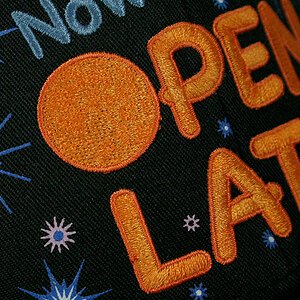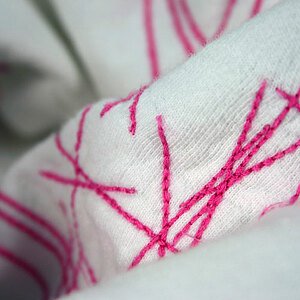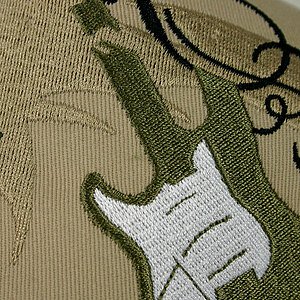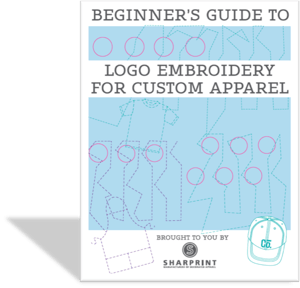Different stitch techniques are used for specific purposes when embroidering a design or logo. Depending on the look of the design and the fabric being embroidered, we choose between 3 main stitch types. Each technique serves a unique purpose.
Satin Stitch
This is the most common embroidery stitch type and is used in the majority of lettering and design outlines.
In this example, you can see the center of the "O" is filled using a fill stitch. The edge of the "O" is reinforced using a satin stitch. The other text uses a satin stitch as the fill and outline. The blue "NOW" text is also satin stitch. This design is sewn over a screen print - clever mixed media approach!

This type of embroidery stitch is also referred to as a running stitch. The dashed line style is typically used to capture very small details in embroidery designs. The walking stitch is commonly used to re-create the look of hand sewing in many retail designs.

This stitch is used to fill large areas of color. The fill stitch is also used to create an underlay foundation to layer more complicated embroidery designs or designs being sewn on flimsy materials (rayon, silk, etc). On high pile garments such as fleece, a fill stitch may be used to create a foundation so an acceptable amount of detail is not lost in the fabric fibers.
This example shows a fill stitch used in most areas to create a nice solid shape. Satin stitch is used in the black swirl and a running stitch is used in the guitar fret detail. The twill fabric has its own texture in the background.
Stitch count estimations are made by viewing the design at size and considering the fabric to be sewn. A stitch count on a fleece garment may be much higher than on a pique cotton garment. For an accurate stitch count for the best end embroidery, please be sure to let us know what kind of fabric we will be embroidering when requesting a quote. All quotes are subject to change until the final sewn logo has been approved.

With the recent technology advances in the apparel industry, it's important to understand the advantages and limitations of embroidery. This guide will provide you and your customers with a strong foundation in:
